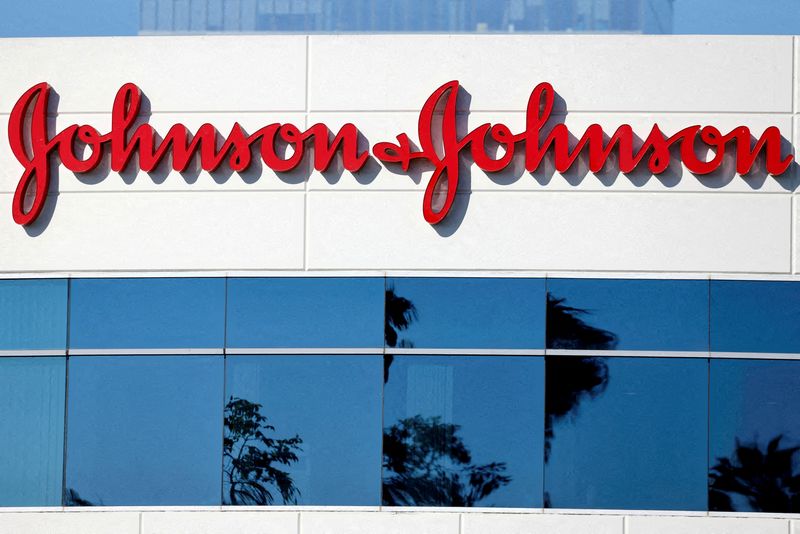Analysis-Stelara patent deal puts J&J back on path to $57 billion 2025 revenue forecast
2023.06.05 12:29

© Reuters. FILE PHOTO: Johnson & Johnson company offices are shown in Irvine, California, U.S., October 14, 2020. REUTERS/Mike Blake/File Photo
By Patrick Wingrove
(Reuters) – Johnson & Johnson (NYSE:)’s legal settlement with Amgen Inc (NASDAQ:) to delay a biosimilar version of its blockbuster psoriasis treatment Stelara until January 2025 could make the drug a larger contributor to J&J’s 2024 and 2025 sales than Wall Street is forecasting.
Stelara, introduced in 2009, has been J&J’s top-selling drug since 2019, with sales reaching $9.7 billion in 2022. Its patents begin to expire this year, opening the door to a cheaper biosimilar entering the market, and raising expectations that the company would need to lower the $13,000 per month price of Stelara.
Availability of biosimilars should trigger a reduction in the price of older biotech medicines, if not by as much as generics do for traditional pills. But legal agreements under which rival drugmakers delay market entry to escape lengthy patent litigation have held back their launches, keeping prices high.
Analysts currently expect J&J to bring in $54.5 billion in 2025 pharmaceutical sales on average, and for Stelara sales to fall from $9.9 billion this year to $7.5 billion in 2024 after a key U.S. patent expires in September, according to Refinitiv data. Two analysts have estimated $5.4 billion for Stelara in 2025.
J&J is forecasting $57 billion in pharmaceutical sales by 2025 after reducing its previous view of $60 billion in April, citing currency dynamics that hurt its pharmaceutical business in 2022.
Analysts told Reuters the Stelara deal with Amgen might put the New Brunswick (NYSE:), New Jersey-based company on track to achieve that amended sales projection, despite early skepticism.
“I don’t think that (deal) is going to get them all the way to $57 billion, but now there’s potentially a path for them to get to that number, whereas before there didn’t seem to be one because they were several billion dollars away,” said Guggenheim analyst Vamil Divan.
He said the drug, which also treats Crohn’s disease and other autoimmune conditions, could generate sales closer to $10 billion in 2024, dropping to $7.5 billion to $8.5 billion the following year. That would add around $4.6 billion to average estimates for pharmaceutical sales, as long as no biosimilars enter the market before 2025.
Amgen said last month the confidential settlement it signed with J&J will allow it to sell its Stelara biosimilar no later than Jan. 1, 2025.
The company’s use of the phrase “no later than” has cast some doubt on Stelara’s prolonged exclusivity. There is also the potential for other drugmakers to launch their own biosimilars before Amgen, although J&J could sue to stop that happening, according to Credit Suisse analyst Trung Huynh.
“If no Stelara biosimilars enter in 2024, I think growth should continue at around 4% in 2023 and 2024,” Huynh said.
Alvotech and Teva Pharmaceutical’s AVT04 could be the next Stelara biosimilar to get U.S. approval in the second half of 2023, Divan said in an analyst note, so long as they address manufacturing issues raised by the Food and Drug Administration over Alvotech’s Reykjavik manufacturing plant.
Neither Teva nor Alvotech responded to requests for comment.
A J&J spokesperson said the company would continue to defend its intellectual property after its Stelara settlement and that the agreement won’t affect its 2023 financial outlook.
J&J is “making good progress” toward its 2025 guidance, the spokesperson said, building on recent comments at an investor conference that it had increasing confidence it could hit its target.








